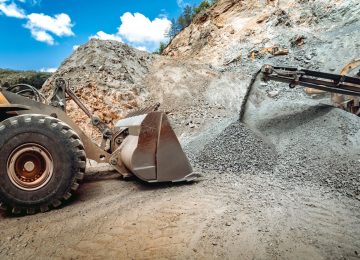Construction sites are notorious for generating significant amounts of dust, which not only poses health risks to workers but also affects nearby communities and the environment. To mitigate these hazards and ensure compliance, construction companies employ various dust suppression techniques from providers like bosstek.com. In this post, we’ll explore some of the most commonly used methods for controlling dust on construction sites.
Wet dust suppression
One of the most effective ways to control dust on a construction site is by using water. Water sprays are one of the oldest and most effective methods for dust suppression on construction sites. Water trucks equipped with nozzles or sprinkler systems are used to disperse water over dusty areas, dampening the soil and preventing dust from becoming airborne. This technique is particularly useful for controlling dust during activities such as earthmoving, demolition, and concrete cutting.
Mechanical dust suppression
Mechanical dust suppression techniques, such as dust collectors and ventilation systems, are ideal for controlling dust generated by machinery and equipment. By capturing dust at the source, these systems prevent it from spreading throughout the construction site, protecting both workers and the surrounding environment. Additionally, vacuum attachments can be fitted to power tools to capture dust directly as it is generated, providing a clean and safe working environment for workers.
Dust suppression chemicals
In addition to water sprays, construction companies may use dust suppression chemicals to enhance dust control efforts. These chemicals are typically applied to the soil or other surfaces prone to dust generation. They work by binding the particles together, making them less likely to become airborne. Common dust suppression chemicals include calcium chloride, magnesium chloride, and lignin sulfonate. These chemicals are often mixed with water and sprayed onto the construction site using specialized equipment.
Vegetation and soil stabilization
Another effective dust suppression technique is to plant vegetation and stabilize soil in and around the construction site. Vegetation acts as a natural barrier against dust, while stabilized soil prevents erosion and dust generation. Soil stabilization techniques are used to improve the structural integrity of the soil and reduce dust generation. This may involve adding binding agents such as cement, lime, or fly ash to the soil to increase its cohesion and reduce dust emissions. Additionally, geotextiles or erosion control blankets may be used to stabilize the soil surface and prevent erosion.
Enclosure and containment
Enclosing dusty operations or containing dust-producing materials can help prevent dust from spreading to surrounding areas. Enclosures, such as temporary structures or barriers, can be erected around activities like sandblasting, grinding, or concrete cutting to contain dust and prevent it from dispersing. Similarly, materials such as gravel, sand, or soil can be stored in covered containers or bins to prevent wind erosion and dust emissions.
Personal protective equipment (PPE)
While not a dust suppression technique per se, the use of personal protective equipment (PPE) is essential for minimizing exposure to dust on construction sites. Workers should wear appropriate PPE, such as respirators, goggles, and gloves, to protect themselves from inhaling or coming into contact with dust particles. Employers should provide training on the proper use and maintenance of PPE to ensure its effectiveness in controlling dust exposure.
To sum up, dust suppression is a critical aspect of construction site management. Therefore, prioritizing dust suppression not only benefits the health and well-being of workers but also demonstrates a commitment to environmental responsibility. Additionally, adopting environmentally friendly dust suppression techniques can minimize the impact on the surrounding environment.












